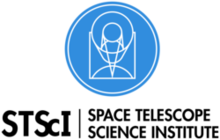https://nexoclom.readthedocs.io/en/latest/ (Reasonably complete and up to date). This part about writing inputfiles is particularly useful.
The easiest way to install is to create a fresh venv or conda environment and use:
pip install nexoclom
There is configuration work that will need to be completed before nexoclom can be used. This process is given in detail below, although it is likely to change soon.
I am working on a script to clean up the installation process
- Install Anaconda Python (version >= 3.8):
- Download the installer from: https://www.anaconda.com/distribution/
- double-click the installer to install. This installs anaconda python in $HOME/anaconda3 and does not need sysadmin privileges.
- Verify it works: Open a new terminal window and start
ipython. You should see something like this:
(base) [sunra m🍔 /~/]$ ipython
Python 3.8.8 (default, Apr 13 2021, 12:59:45)
Type 'copyright', 'credits' or 'license' for more information
IPython 7.32.0 -- An enhanced Interactive Python. Type '?' for help.
In [1]:
- NOTE: I think Anaconda python likes the bash shell, but there are probably ways around that.
-
Create a new python environment with the model.
-
Download the file nexoclom_environment.yml
-
In a text editor, update the last four lines
prefix: /user/mburger/anaconda3/envs/nexoclom/bin/python variables: PGDATA: /user/mburger/.postgres/main NEXOCLOMCONFIG : /user/mburger/.nexoclomFor prefix, you want
$HOME/anaconda3/..., but$HOMEneeds to be the specific path. -
Create the envirnoment:
(base) [sunra m🍔 /~/]$ conda env create -f nexoclom_environment.yml -
To use this environment run:
(base) [sunra m🍔 /~/]$ conda activate nexoclom WARNING: overwriting environment variables set in the machine overwriting variable PGDATAActivating nexoclom sets the environment variables
PGDATAandNEXOCLOMCONFIGNone of this will work if the correct environment is not active. You will know it's active because your prompt will change and
pythonwill point to a different executable:(nexoclom) [sunra m🍔 /~/]$ which python /Users/mburger/anaconda/envs/nexoclom/bin/python -
To turn it off run:
(nexoclom) [sunra m🍔 /~/]$ conda deactivate
-
-
Create the .nexoclom file
- In your home directory create a file called
.nexoclomwith the following lines:savepath = <fullpath>/modeloutputs datapath = <fullpath>/ModelData database = thesolarsystemmb mesdatapath = <fullpath>/UVVSData mesdatabase = messengeruvvsdb
- In your home directory create a file called
<fullpath> does not need to be the same in all lines, but the directories all
need to be valid.
-
Initialize the postgres server if necessary:
- In your
.bashrcor.bash_profilefile (the file that runs when you start a terminal window) add the line:(This step technically isn't needed because the environment variable gets set when you activate the environment).export PGDATA=/Users/mburger/.postgres/main - Execute the following commands
(nexoclom) [sunra m🍔 /~/]$ initdb -D $PGDATA (nexoclom) [sunra m🍔 /~/]$ pg_ctl -l $PGDATA/logfile start (nexoclom) [sunra m🍔 /~/]$ createdb <username> (nexoclom) [sunra m🍔 /~/]$ createdb thesolarsystemmb (nexoclom) [sunra m🍔 /~/]$ createdb messengeruvvsdb-
Find
<username>with(nexoclom) [sunra m🍔 /~/]$ echo $USER -
This needs to match database in the
.nexoclomfile -
This needs to match mesdatabase in the
.nexoclomfile
-
- In your
-
Configure the MESSENGER UVVS database if you will be making comparisons to MASCS/UVVS data. Unfortunately, the data products being used here are not publicly available (I don't own this data reduction). UVVS data is available from the Planetary Data System, but it would take some work to get it integrated into the database. We could probably work something out if you want to compare with the data.
- Download the MESSENGERdata package if you're authorized (email Matthew Burger)
- Put the file in the
mesdatapathdirectory and untar it.(nexoclom) [sunra m🍔 /~/]$ tar -xvzf Level1.tar.gz - Then run:
(nexoclom) [sunra m🍔 /~/]$ ipython Python 3.8.13 | packaged by conda-forge | (default, Mar 25 2022, 06:06:49) Type 'copyright', 'credits' or 'license' for more information IPython 8.2.0 -- An enhanced Interactive Python. Type '?' for help. In [1]: from MESSENGERuvvs import initialize_MESSENGERdata In [2]: initialize_MESSENGERdata()
This will take a while to run (hours probably).
-
To install updates, run:
(nexoclom) [sunra m🍔 /~/]$ pip install --upgrade nexoclom (nexoclom) [sunra m🍔 /~/]$ pip install --upgrade MESSENGERuvvsor to update everything:
(nexoclom) [sunra m🍔 /~/]$ conda env update -f nexoclom_environment.yml -
There are some test files at https://github.com/mburger-stsci/nexoclom/tree/master/test_files/. Download them to any working directory. Edit the
model_testing.pyso that inputfile points to directory with theCa.isotropic.flat.input. Then do:(nexoclom) [sunra m🍔 /~/]$ python model_testing.pyThis should produce something that looks like https://www.stsci.edu/~mburger/nexoclom/Ca_Oribt3576_nexoclom.html
We love contributions! nexoclom is open source, built on open source, and we'd love to have you hang out in our community.
Imposter syndrome disclaimer: We want your help. No, really.
There may be a little voice inside your head that is telling you that you're not ready to be an open source contributor; that your skills aren't nearly good enough to contribute. What could you possibly offer a project like this one?
We assure you - the little voice in your head is wrong. If you can write code at all, you can contribute code to open source. Contributing to open source projects is a fantastic way to advance one's coding skills. Writing perfect code isn't the measure of a good developer (that would disqualify all of us!); it's trying to create something, making mistakes, and learning from those mistakes. That's how we all improve, and we are happy to help others learn.
Being an open source contributor doesn't just mean writing code, either. You can help out by writing documentation, tests, or even giving feedback about the project (and yes - that includes giving feedback about the contribution process). Some of these contributions may be the most valuable to the project as a whole, because you're coming to the project with fresh eyes, so you can see the errors and assumptions that seasoned contributors have glossed over.
Note: This disclaimer was originally written by Adrienne Lowe for a PyCon talk, and was adapted by nexoclom based on its use in the README file for the MetPy project.
